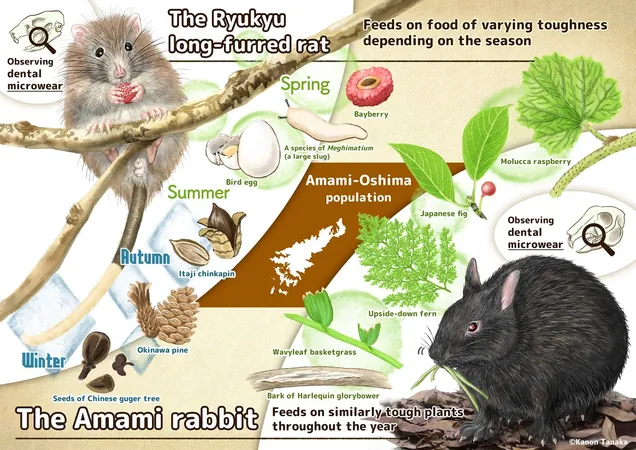
Zoonotic Infections in the Canadian Arctic: A Closer Look at Emerging Health Risks
2025-01-20
Author: Jacques
Introduction
A comprehensive new review has shed light on zoonotic infections—diseases that are transmitted from animals to humans—within the Canadian Arctic, a region currently facing increased global attention and the pressing realities of climate change.
Publication Details
Published in the esteemed Canadian Medical Association Journal, this review serves as a crucial resource for clinicians, detailing methods for identifying and managing seven key zoonotic infections prevalent in the area.
Impact of Climate Change
As climate change alters the Arctic landscape, the risks of these diseases have escalated, raising urgent questions about public health strategies.
Role of Indigenous Peoples
Dr. Justin Penner, an infectious diseases physician at CHEO in Ottawa and the Qikiqtani General Hospital in Iqaluit, Nunavut, along with his co-authors, emphasizes the vital role of Indigenous Peoples in the region. "Indigenous Peoples continue to be caretakers of the Canadian Arctic; their cultural connection to this environment fosters unique exposures to zoonotic diseases, many of which are not fully understood," he states.
Cultural Practices and Food Security
The Arctic’s diverse bioclimatic zones—spanning subarctic, low arctic, and high arctic conditions—are home to Indigenous communities including the Inuit, Gwich'in, and Athabaskan peoples. These groups rely heavily on traditional diets that include "country foods" such as wild game, fish, and marine mammals, all of which entail various health risks in the face of changing environmental dynamics.
A Holistic Approach to Health
The authors advocate for a holistic approach in medical practice, urging healthcare providers to merge Inuit Qaujimajatuqangit—traditional Inuit knowledge—with the One Health initiative. This integrated view recognizes that human health is deeply intertwined with animal health and environmental conditions, which can provide crucial insights into disease prevention and control.
Cultural Considerations in Health
Cultural customs and interactions with the Arctic ecosystem are critical in diagnosing and addressing under-recognized infectious diseases in this vulnerable region. The authors point out that a profound respect for these traditions can enhance clinical care and public health initiatives.
Risk Factors for Zoonotic Infections
The review highlights significant risk factors for zoonotic infections that include traditional hunting practices and the use of sled dogs. Furthermore, it outlines how climate change is reshaping the Arctic ecosystem.
Environmental Changes
As sea ice diminishes, animal migration patterns shift, disrupting hunting practices and impacting the life cycles of parasites that threaten human health. The thawing of permafrost complicates food preparation methods, while warmer temperatures enable the spread of insect vectors, potentially introducing new infections to already vulnerable populations.
Conclusion
This in-depth article also features several illustrations that depict the intricate connections between humans, animals, and disease transmission, emphasizing the need for informed public health efforts in the region.
As the Arctic continues to evolve under the pressures of climate change, understanding the nexus between zoonotic diseases and environmental health is more crucial than ever for both Indigenous and non-Indigenous populations alike. The review not only underscores these challenges but also highlights an urgent call to action for clinicians and researchers to bridge the gap in knowledge and support the health of Arctic communities.









 Brasil (PT)
Brasil (PT)
 Canada (EN)
Canada (EN)
 Chile (ES)
Chile (ES)
 Česko (CS)
Česko (CS)
 대한민국 (KO)
대한민국 (KO)
 España (ES)
España (ES)
 France (FR)
France (FR)
 Hong Kong (EN)
Hong Kong (EN)
 Italia (IT)
Italia (IT)
 日本 (JA)
日本 (JA)
 Magyarország (HU)
Magyarország (HU)
 Norge (NO)
Norge (NO)
 Polska (PL)
Polska (PL)
 Schweiz (DE)
Schweiz (DE)
 Singapore (EN)
Singapore (EN)
 Sverige (SV)
Sverige (SV)
 Suomi (FI)
Suomi (FI)
 Türkiye (TR)
Türkiye (TR)
 الإمارات العربية المتحدة (AR)
الإمارات العربية المتحدة (AR)